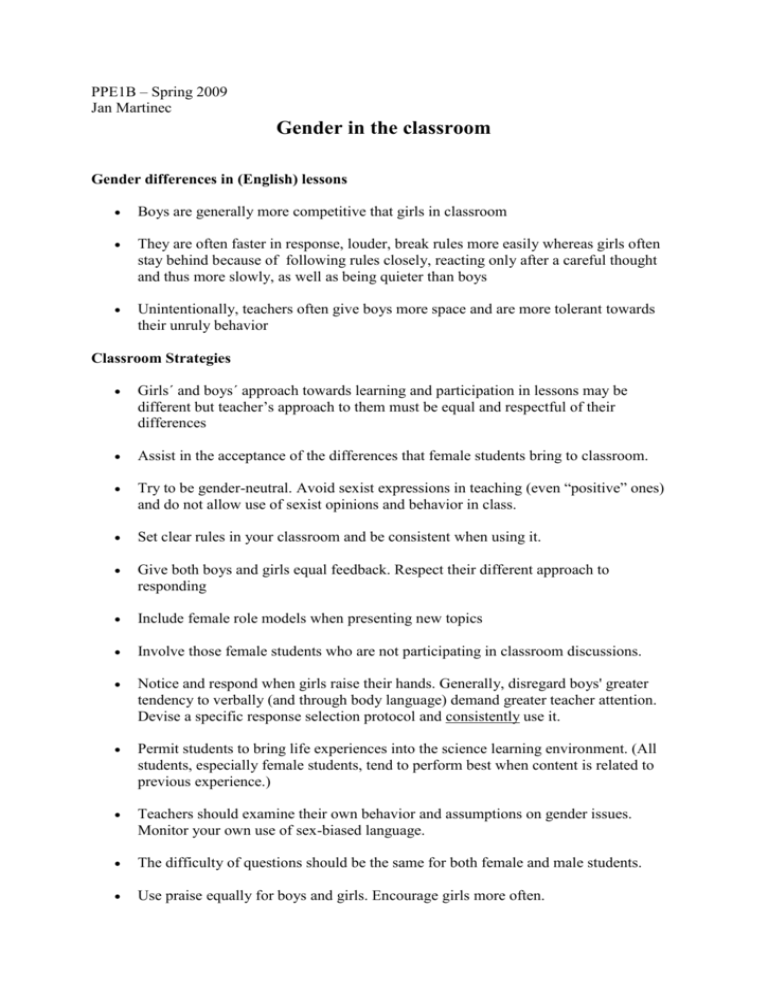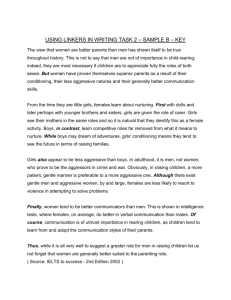Gender in the classroom (Jan Martinec)
advertisement

PPE1B – Spring 2009 Jan Martinec Gender in the classroom Gender differences in (English) lessons Boys are generally more competitive that girls in classroom They are often faster in response, louder, break rules more easily whereas girls often stay behind because of following rules closely, reacting only after a careful thought and thus more slowly, as well as being quieter than boys Unintentionally, teachers often give boys more space and are more tolerant towards their unruly behavior Classroom Strategies Girls´ and boys´ approach towards learning and participation in lessons may be different but teacher’s approach to them must be equal and respectful of their differences Assist in the acceptance of the differences that female students bring to classroom. Try to be gender-neutral. Avoid sexist expressions in teaching (even “positive” ones) and do not allow use of sexist opinions and behavior in class. Set clear rules in your classroom and be consistent when using it. Give both boys and girls equal feedback. Respect their different approach to responding Include female role models when presenting new topics Involve those female students who are not participating in classroom discussions. Notice and respond when girls raise their hands. Generally, disregard boys' greater tendency to verbally (and through body language) demand greater teacher attention. Devise a specific response selection protocol and consistently use it. Permit students to bring life experiences into the science learning environment. (All students, especially female students, tend to perform best when content is related to previous experience.) Teachers should examine their own behavior and assumptions on gender issues. Monitor your own use of sex-biased language. The difficulty of questions should be the same for both female and male students. Use praise equally for boys and girls. Encourage girls more often. Use real-life metaphors and examples in teaching that are pertinent to female students. (Female metaphors should be balanced with male ones.) Use the same nonverbal cue to address both boys and girls (e.g., head nodding and encouraging smiles). Check to see if textbooks and other materials you are using present an honest view of the options open to both males and females. Watch for any unintended biases in your own classroom practices. Look for ways in which your school may be limiting the options open to male or female students. Use gender-free language as much as possible. Conclusion Classroom climate and academic achievement are directly related. Gender-fair teaching, in short, is good teaching that benefits all students. Gender-fair teaching challenges educators both to treat all students equally and to individually recognize and accommodate different learning styles.











